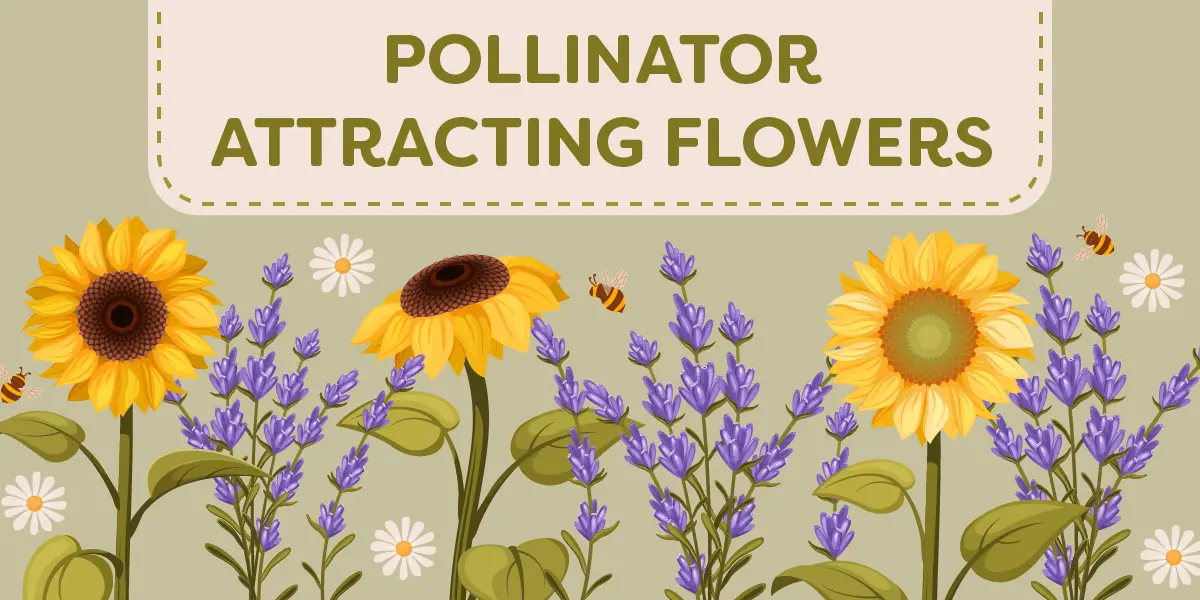Southern California’s mild climate offers the perfect environment for native and exotic blooms and, by extension, pollinators like bees, butterflies, and hummingbirds.
These tiny creatures facilitate plant reproduction and garden health. In return, pollinator-attracting plants provide them with food and shelter.
However, not all plants excel at attracting bees, butterflies, and birds, and not all flowering plants are equally beautiful or easy to maintain.
In this blog, we’ve compiled a list of pollinator-attracting flowering plants well-suited for Southern California’s unique climate, soil, and water conditions.
Southern California’s Best Pollinator-Attracting Flowers
1. Milkweed (Asclepias spp.)
This native plant is the primary food source for monarch caterpillars and a nectar-rich treat for adult butterflies. It’s low-maintenance and drought-resistant, making it ideal for sustainable gardens.
- Bloom Time: Summer
- Pollinators: Butterflies, bees
- Care Tips: Tolerates poor soil, requires full sun
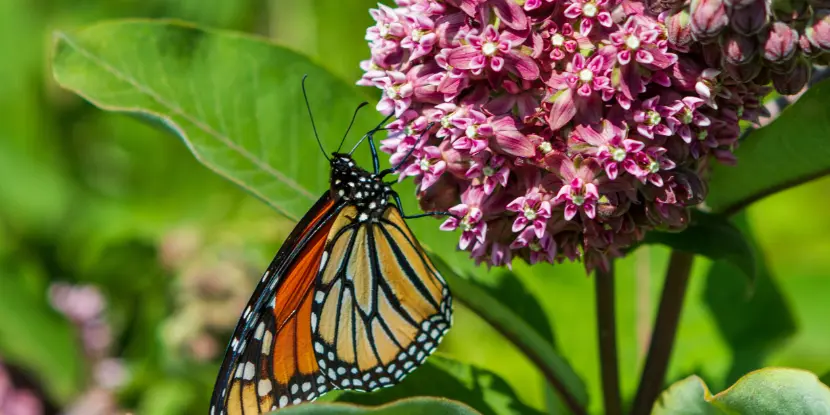
Milkweed is the sole food of the Monarch Butterfly. It knows what it likes!
2. California Poppy (Eschscholzia californica)
California’s state flower thrives in sunny, dry conditions with minimal care. Springtime brings a riot of brilliant orange color to your garden.
- Bloom Time: Spring
- Pollinators: Bees, butterflies
- Care Tips: Drought-tolerant, requires full sun
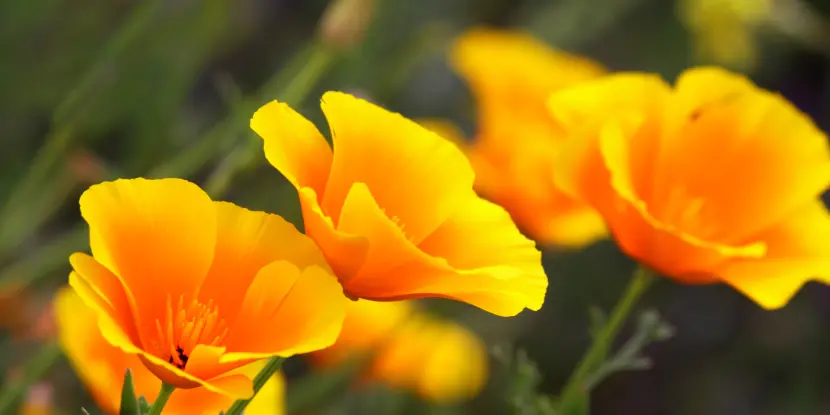
The brilliant blooms of the California Poppy.
3. Lavender (Lavandula spp.)
Who can resist the soothing scent of lavender? Certainly not bees! This aromatic herb is a pollinator magnet.
- Bloom Time: Late spring to summer
- Pollinators: Bees, butterflies
- Care Tips: Needs well-drained soil, full sun, and occasional pruning
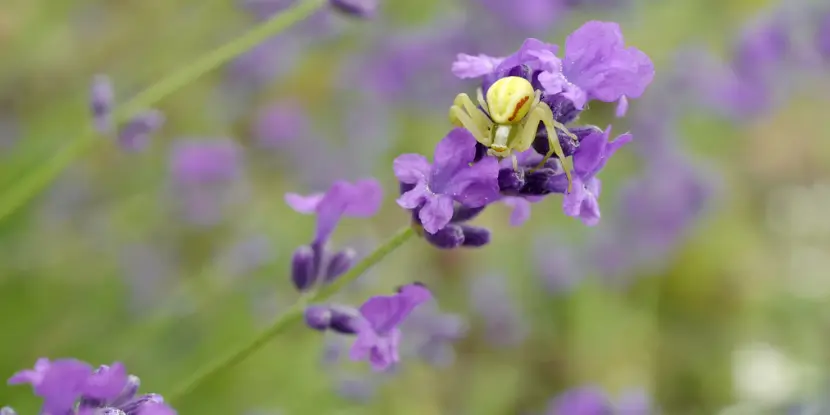
A crab spider Misumena on a lavender flower.
4. Sunflower (Helianthus annuus)
Sunflowers attract hordes of bees, butterflies, and even birds. Their radiant faces make a bold statement in cut flower displays.
- Bloom Time: Summer to fall
- Pollinators: Bees, butterflies, birds
- Care Tips: Requires full sun and regular watering
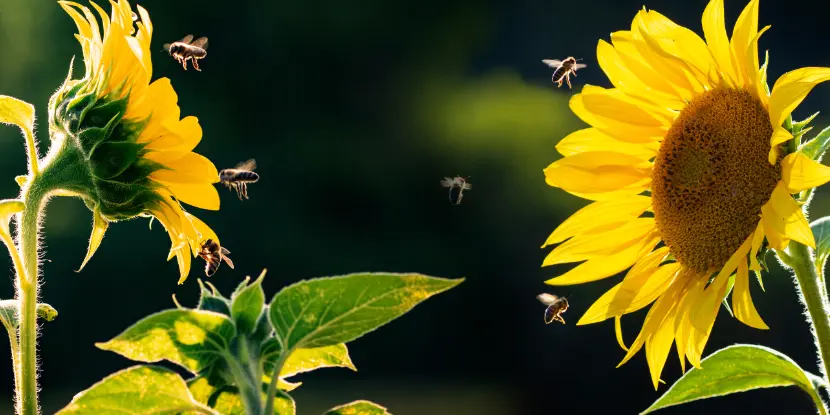
Sunflowers make a bold statement in cut flower displays.
5. Cosmos (Cosmos bipinnatus)
Cosmos are easy-to-grow, daisy-like annuals that lend a wild feel to a garden. Their nectar-rich centers lure bees and butterflies.
- Bloom Time: Summer to fall
- Pollinators: Bees, butterflies
- Care Tips: Tolerates poor soil, requires full sun

Cosmos are easy-to-grow and have a wild feel.
6. Salvia (Salvia spp., or sage)
Salvia’s tubular flowers draw hummingbirds to the yard, making the plant a must-have for a wildlife-friendly garden.
- Bloom Time: Spring to fall
- Pollinators: Bees, butterflies, hummingbirds
- Care Tips: Needs well-drained soil and occasional pruning
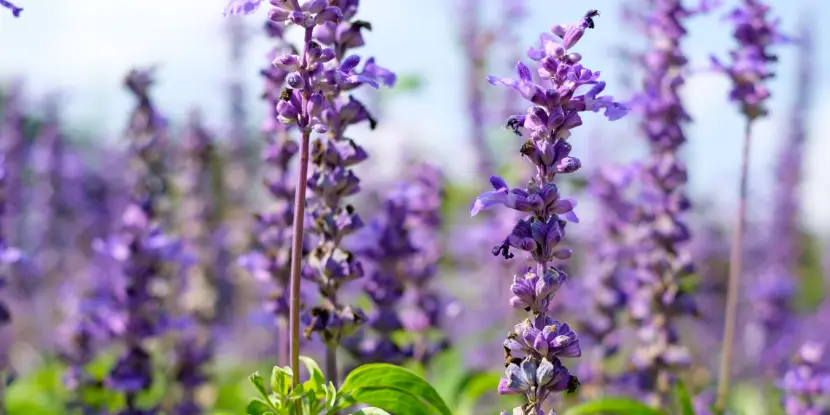
Salvia is a must-have for a wildlife-friendly garden.
7. Coneflower (Echinacea spp.)
Coneflowers are an excellent source of nectar and a popular herb in natural medicine. These tough plants with striking cone-shaped floral disks can easily withstand Southern California’s summer heat.
- Bloom Time: Summer to fall
- Pollinators: Bees, butterflies
- Care Tips: Requires well-drained soil and full sun
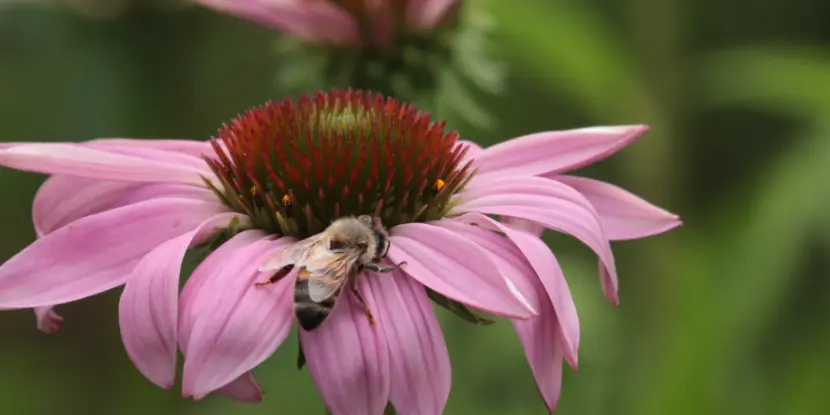
Echinacea has medicinal properties beyond what it does for bees.
8. Butterfly Bush (Buddleja davidii)
As its name suggests, this deciduous shrub is a butterfly favorite. Its long flower spikes can be purple, pink, white, red, and other color variations.
- Bloom Time: Summer to fall
- Pollinators: Butterflies
- Care Tips: Prefers moist but well-drained soil and full sun
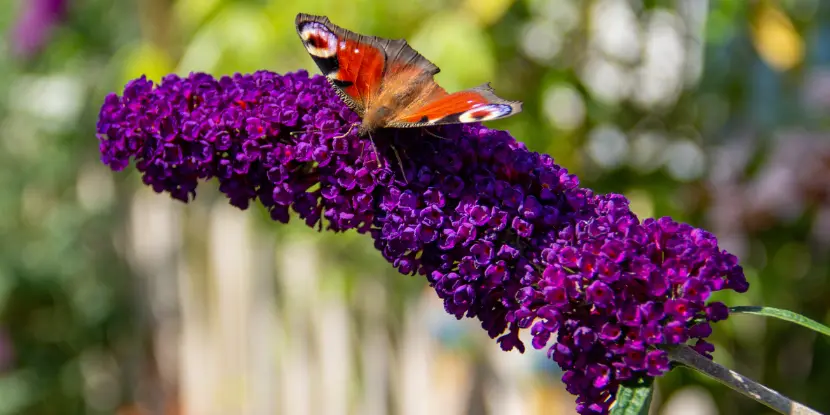
It’s called Butterfly Bush for a reason. Moths also love it.
9. Bee Balm (Monarda spp.)
Bee balm is a fragrant, old-fashioned beauty that attracts bees and hummingbirds alike. Its edible flowers can be used in teas and salads.
- Bloom Time: Summer
- Pollinators: Bees, butterflies, hummingbirds
- Care Tips: Requires full sun and moist soil
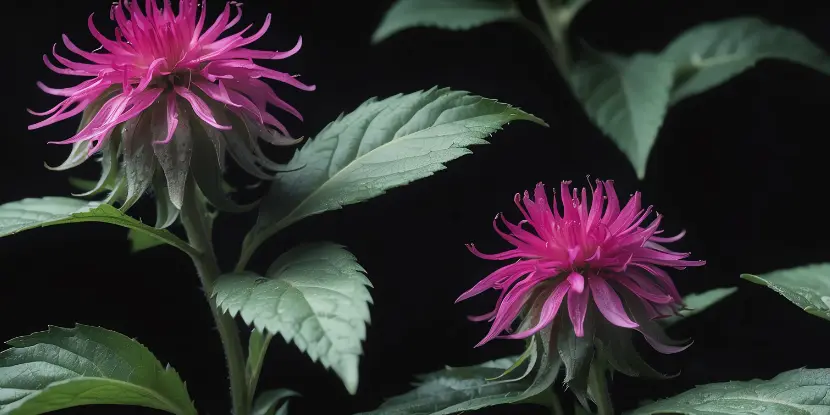
Bee Balm flowers can be used in salads and teas.
10. Fuchsia (Fuchsia spp.)
These sweet, delicate hanging flowers are a powerful draw for hummingbirds. They’ll grace your garden with brilliant colors all summer.
- Bloom Time: Summer
- Pollinators: Hummingbirds
- Care Tips: Needs partial shade and regular watering
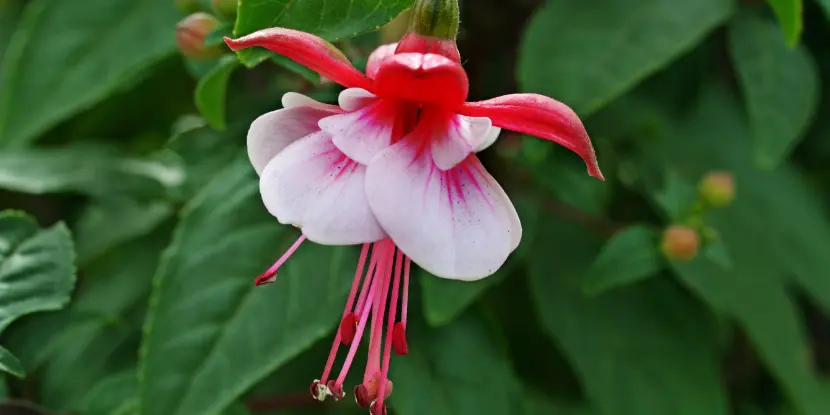
The distinctive bell-shaped fuchsia flower is a hummingbird magnet.
11. Penstemon (Penstemon spp.)
Penstemons are low-maintenance perennials that attract all sorts of pollinators. They’re known for their tubular flowers in various bright colors.
- Bloom Time: Spring to summer
- Pollinators: Bees, butterflies, hummingbirds
- Care Tips: Thrives in full sun but can also tolerate partial shade
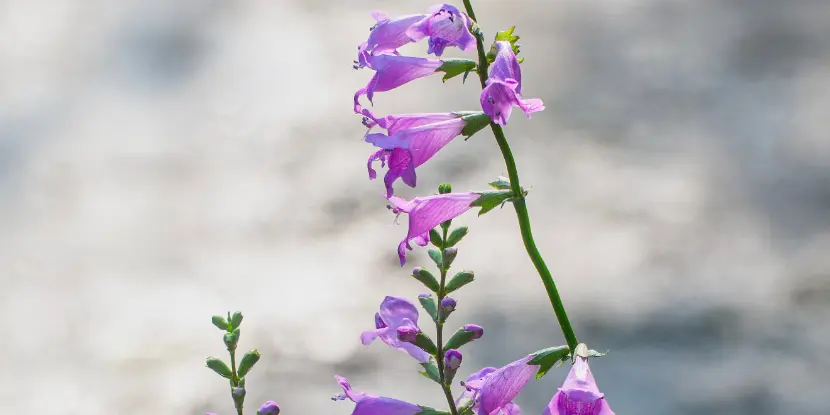
Penstemons are native US perennial flowers.
12. Verbena (Verbena spp.)
This low-maintenance, drought-resistant flowering plant thrives in hot, sunny spots, making it ideal for Southern California gardens.
- Bloom Time: Spring to fall
- Pollinators: Butterflies, bees
- Care Tips: Requires full sun and regular watering
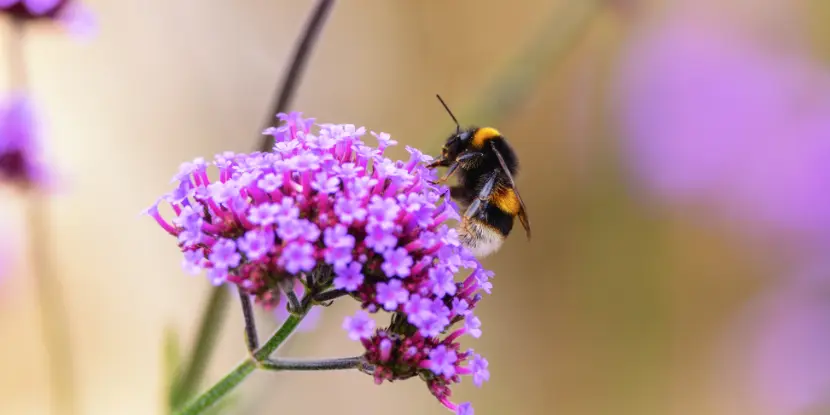
Verbena is tough and 100% bee-approved.
13. Yarrow (Achillea millefolium)
Yarrow’s flat-topped clusters of tiny flowers are irresistible to pollinators. This hardy perennial, with its fern-like foliage and cheerful blooms, is perfect for filling gaps in your garden.
- Bloom Time: Summer
- Pollinators: Bees, butterflies
- Care Tips: Prefers well-drained soil and full sun
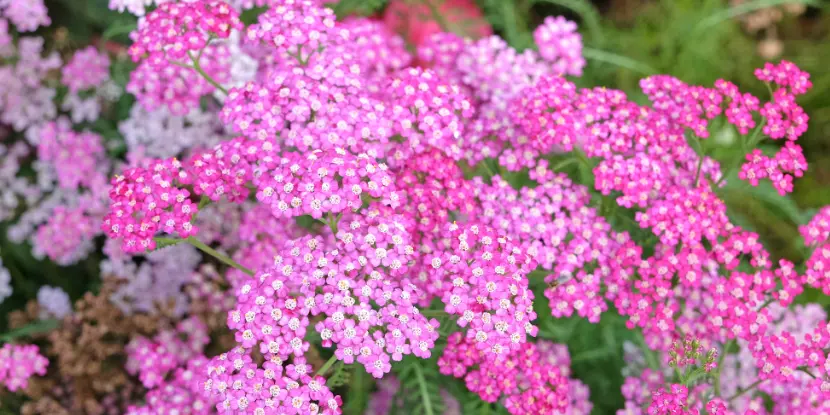
Pink yarrow hangs its shingle for all the insect pollinators in the garden.
14. Zinnia (Zinnia elegans)
Zinnias’ bright and showy flowers provide nectar for butterflies, bees, and other pollinators. These annuals come in various colors and are easy to grow from seed.
- Bloom Time: Summer to fall
- Pollinators: Butterflies, bees
- Care Tips: Requires full sun and regular watering
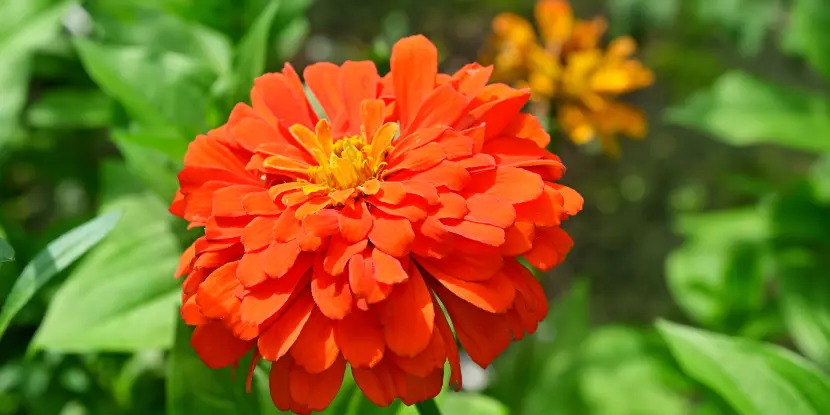
The showy zinnia bloom is a favorite in cut flower arrangements.
15. Black-Eyed Susan (Rudbeckia hirta)
Black-eyed Susans are cheerful flowers that bloom throughout the summer, attracting bees and butterflies. They’re often used in native plant gardens.
- Bloom Time: Summer to fall
- Pollinators: Bees, butterflies
- Care Tips: Tolerates poor soil and requires full sun
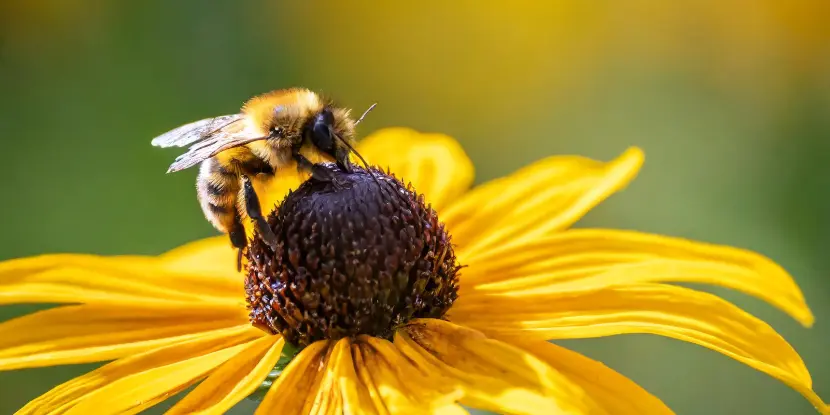
Black-eyed Susans look like the little sisters of the sunflower. Bees give them their seal of approval.
16. Lantana (Lantana spp.)
This flowering plant attracts butterflies and hummingbirds while repelling mosquitos. It’s heat-tolerant and easy to care for, but if ingested, it can be toxic to pets.
- Bloom Time: Spring to fall
- Pollinators: Bees, butterflies, hummingbirds
- Care Tips: Requires full sun and regular watering
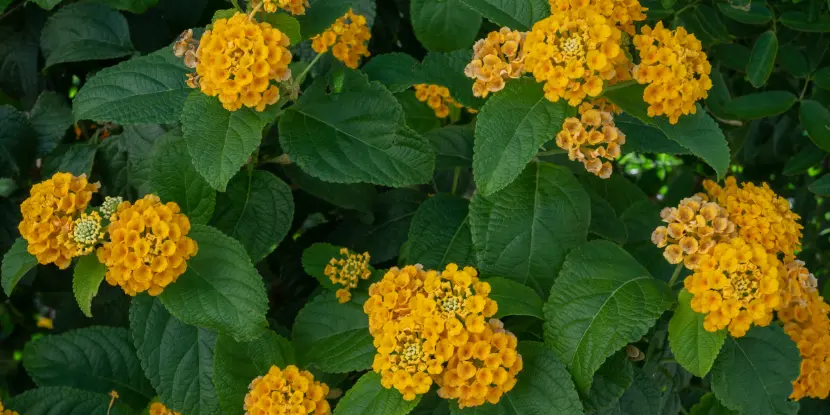
Aside from occasional pruning, latana needs little attention once established.
17. Borage (Borago officinalis)
This herb attracts bees, who love its clusters of small, star-shaped flowers. It’s also edible and has been used medicinally for centuries.
- Bloom Time: Summer to fall
- Pollinators: Bees
- Care Tips: Prefers well-drained soil and full sun
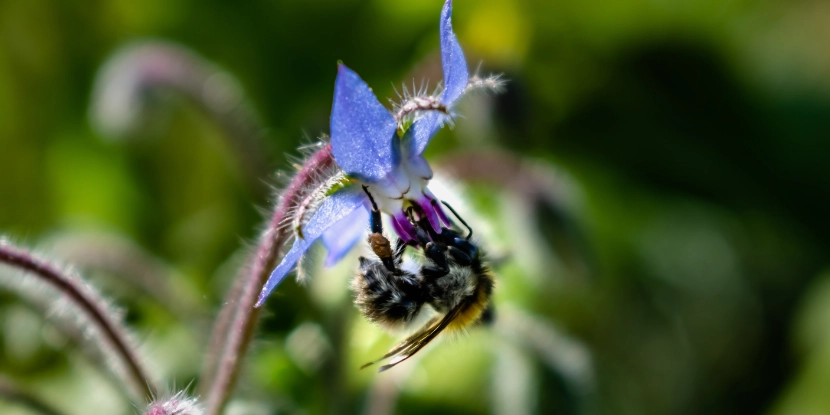
The borage flower is edible, and the plant is valued for its medicinal oils.
18. Marigold (Tagetes spp.)
Marigolds also serve as a natural pest deterrent, making them a popular choice for companion planting.
- Bloom Time: Spring to fall
- Pollinators: Bees, butterflies
- Care Tips: Thrives in well-drained soil and full sun; deadheading encourages continuous blooming

Marigold is a companion plant that repels noxious pests while attracting pollinators.
Designing Your Pollinator Paradise
- Opt for a mix of native and non-native species to provide a diverse food source for pollinators throughout the year.
- Incorporate trees, shrubs, and ground covers to create a layered landscape with shelter and nesting sites.
- Pollinators need water and shelter, too. A shallow dish with water and stones for perching can be a lifeline for thirsty insects.
- Leave some areas of your garden a little wild to provide natural habitats.
FAQs: More about Pollinator-Attracting Flowers
Q: What flowers attract the most pollinators in Southern California?
California poppies, lavender, sunflowers, and milkweed are among the best pollinator-attracting flowers for Southern California. These plants are well-suited to the climate and provide ample nectar and pollen.
Q: How can I make my garden more pollinator-friendly?
Choose a variety of plants with staggered bloom times, provide water sources, and avoid using pesticides. Creating a diverse and welcoming habitat will encourage more pollinators to visit.
Q: Are native plants better for attracting pollinators?
Generally, yes, because they’ve evolved with native creatures and have adapted to the climate and soil conditions. However, incorporating some non-native species can offer benefits, especially in urban areas where native options might be limited.
Q: What are some annual flowers that attract pollinators?
Annual flowers like cosmos, marigolds, and petunias are good options. These blooms add vibrant color to your garden and provide much-needed nectar throughout the growing season.
Q: How can I ensure my plants are healthy for pollinators?
Maintain healthy plants by providing adequate water, using organic fertilizers, and watching for pests. Healthy plants produce more nectar and pollen to sustain local pollinator populations.
Q: Is it necessary to plant a large garden to attract pollinators?
No, even small gardens or balcony spaces can attract pollinators. A few well-placed flowers in pots or raised beds can create a welcoming environment for bees, butterflies, and other beneficial insects.
Q: What should I do if I notice a decline in pollinator populations in my area?
Consider planting more native flowers, reducing pesticide use, and advocating for local green spaces. Engaging with community efforts to protect pollinators can also have a significant impact.
Q: Can I create a pollinator-friendly garden in a shady area?
You can still create a pollinator paradise in shady spots by selecting shade-tolerant plants like hostas, astilbes, and impatiens. Remember to provide some sun areas for basking insects, and use reflective surfaces to maximize the available light.
Q: How can I make my garden more attractive to hummingbirds?
Planting bright red or orange flowers is a sure way to attract hummingbirds. You can also incorporate hummingbird feeders filled with sugar water as an additional food source and provide perching spots, like small branches or trellises.

